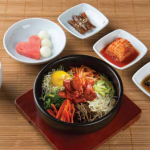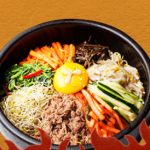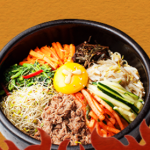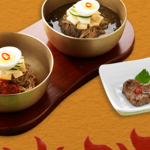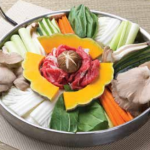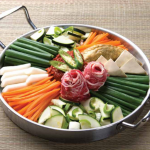Selamat datang! (Welcome!) Are you ready to embark on a fascinating culinary journey that has captivated the hearts and taste buds of youth all over the world? In this blog post, we’ll explore the immense popularity of Korean dishes among the younger generation. With their unique flavors, vibrant colors, and social media-worthy presentations, Korean delicacies have become a global sensation. So, what makes these dishes so irresistible? Let’s dive right in!
Introduction
Imagine yourself sitting at a bustling street-food market in Seoul, inhaling the mouthwatering aroma of spicy Korean barbecues and sizzling Bibimbap. As you take your first bite, a symphony of flavors dances on your palate, leaving you craving for more. This sensory delight is just the beginning of the magnetic pull that Korean cuisine has on today’s youth.
The K-Food Phenomenon
Korean dishes, affectionately known as K-Food, have taken the world by storm, especially among the young generation. While it’s not uncommon to see international influences in popular cuisines, Korean food has managed to carve out its own niche. The emerging trend of K-Pop and K-Dramas has undoubtedly played a significant role in popularizing Korean culture, with food being an integral component.
The Flavorful and Healthy Appeal
One of the main reasons behind the rise in popularity of Korean dishes is their unique taste profiles. Korean cuisine beautifully balances five primary flavors: spicy (la), sweet (manis), salty (asin), bitter (pahit), and sour (masam), ensuring a symphony of exquisite tastes. The combination of these flavors, along with a multitude of spices and fermented ingredients, adds depth and complexity to each dish.
Another factor that draws the youth to Korean food is its focus on health. In recent years, there has been a global shift towards healthier eating habits, and Korean cuisine perfectly aligns with this trend. Many Korean dishes consist of fresh vegetables, lean proteins, and fermented foods like kimchi. With its emphasis on simple and natural ingredients, Korean food has become a go-to choice for health-conscious individuals.
Visually Stunning and Social Media-Worthy
If there’s one thing that today’s youth craves more than great taste, it’s Instagrammable food! Korean cuisine has mastered the art of presentation, making each dish a feast for the eyes. From the vibrant hues of various banchan (side dishes) to the picture-perfect arrangements of bibimbap toppings, Korean food knows how to leave a lasting visual impression.
This visually stunning aspect quickly caught the attention of the younger generation, who eagerly share their food experiences on social media. The rise of food influencers and hashtags like #foodporn and #foodstagram have only heightened the enchantment surrounding Korean delicacies.
The Thrill of Culinary Exploration
In an increasingly interconnected world, experiencing different cultures has never been more accessible. Korean food offers a gateway to a unique culinary adventure, piquing the curiosity of adventurous and globe-trotting youth. With a multitude of flavors, ingredients, and cooking techniques, Korean cuisine invites exploration and experimentation.
Conclusion
The irresistible allure of Korean dishes among the youth can be attributed to a perfect blend of flavors, health-conscious choices, visually appealing presentations, and the thrill of culinary exploration. Korean food has become more than just sustenance; it has become a gateway to the vibrant and captivating culture of Korea.
So, why not join the millions of young food enthusiasts who have fallen head over heels for Korean cuisine? Take your taste buds on a mesmerizing journey through the enchanting landscape of K-Food, and discover why Korean dishes have become a global sensation!
Frequently Asked Questions (FAQs):
- Are all Korean dishes spicy?
-
No, not all Korean dishes are spicy. While spice is a common feature in Korean cuisine, there are plenty of non-spicy dishes to enjoy as well.
-
Is Korean food suitable for vegetarians or vegans?
-
Absolutely! Korean cuisine offers a wide array of vegetarian and vegan options. Dishes like Bibimbap, Kimbap, and Japchae can be prepared without meat or seafood.
-
Where can I experience authentic Korean cuisine outside of Korea?
-
Authentic Korean restaurants can be found in many major cities around the world. It’s always a good idea to look for restaurants with good reviews or seek recommendations from Korean food enthusiasts.
-
What is the significance of kimchi in Korean cuisine?
-
Kimchi holds great cultural and historical importance in Korea. It is a traditional side dish made from fermented vegetables, usually cabbage, and serves as a flavorful accompaniment to many Korean meals.
-
Are there any dessert options in Korean cuisine?
- Absolutely! Korean cuisine offers delightful dessert options such as Bingsu (shaved ice with various toppings), Hotteok (sweet filled pancakes), and Yakwa (honey cookies), among others.
Feed your desire for culinary exploration with the delightful world of Korean dishes! Selamat menjamu selera! (Enjoy your meal!)

